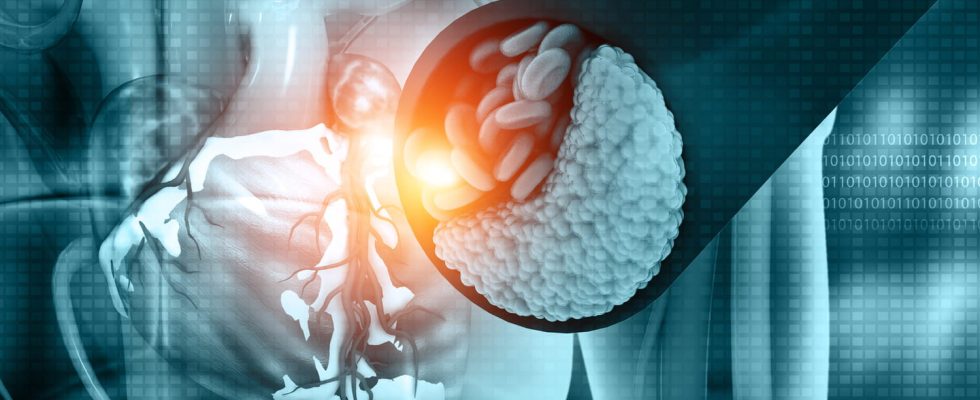Acute coronary syndrome (ACS) occurs when the blood supply is suddenly reduced or interrupted at the level of a feeder artery of the heart called the coronary artery. It’s a medical emergency.
What is the definition of an acute coronary syndrome?
Acute coronary syndrome is a term used to designate a set of situations in which a blocked coronary artery, reducing or preventing blood supply to part of the heart. Depending on its size and location, the obstruction can cause angina or myocardial infarction (heart attack). It’s about a absolute medical emergency.
Is it the same as a myocardial infarction?
Myocardial infarction is the result and the ultimate stage of acute coronary syndrome. In other words, it is following the interruption of the blood supply that part of the heart is no longer irrigated and that the infarction (death of cardiac tissue) occurs.
What are the symptoms of an acute coronary syndrome?
Acute coronary syndrome is essentially manifested by:
- Shortness of breath;
- Tiredness ;
- More or less intense chest pain;
- Nausea ;
- Vomitings ;
- Dizziness;
- Palpitations or even loss of consciousness.
What are the causes of an acute coronary syndrome?
Acute coronary syndrome is caused by a lack of blood supply to the heart. This phenomenon results from the sudden obstruction of a coronary artery by an obstacle (blood clot, atheroma). Since the heart is no longer sufficiently irrigated, a heart attack can occur, resulting in the death of heart tissue.
The diagnosis is mainly clinical. First, it is based on questioning the patient (precise description of chest pain) and physical examination. “Most often, the ECG is contributive except in certain special cases where it can be difficult to interpret. He can show “typical” signs of infarction, help to date the beginning of the signs and to specify the location of the obstructed artery. The dosage of cardiac enzymes (troponins, etc.) is useful in “borderline” forms“, it helps to date and quantify the extent of necrotic myocardium“, specifies Dr Claude Kouakam, cardiologist at the Heart Lung Institute of the Lille University Hospital. A biological assessment is then prescribed to assess cardiovascular risk factors.
“The treatment of acute coronary syndrome consists mainly of to “unclog” the blocked coronary artery or arterieseither by drug treatment to thin and liquefy the blood clot, or by going directly to unclog the artery using a probe that is introduced into an artery of the arm or leg during an examination called coronary angiography“, develops the specialist. The cardiologist can then directly “aspirate” the clot or unblock the artery using a small balloon and implant a kind of small metal mesh called a stent to prevent the artery from becoming blocked again. “The results are generally very satisfactory and this technique is favored in France and in many countries in the context of emergency, unless contraindicated or problem of access.“, he continues.
Thanks to Dr Claude Kouakam, cardiologist at the Heart Lung Institute of Lille University Hospital
